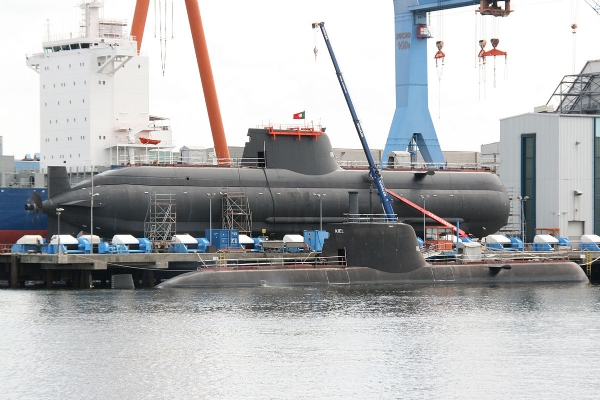Germany and India are close to making a deal to build diesel submarines in the South Asian country. This is because Russia’s long war in Ukraine is pushing New Delhi to get its military equipment from more places than just Moscow.
Thyssenkrupp AG’s marine arm and India’s Mazagon Dock Shipbuilders Limited are set to jointly bid for an estimated $5.2 billion project to build six submarines for the Indian navy, according to people with knowledge of the matter.
German and Indian officials said that Defense Minister Boris Pistorius, who arrived in New Delhi on Tuesday for a two-day visit, will sign the preliminary deal or memorandum of understanding.
Pistorius told public broadcaster ARD that the submarine deal will be on the agenda when he visits Mumbai Wednesday.
In the TV interview, he said that his job is to “support and assist” the talks between the German executives he is traveling with and their Indian counterparts. Pistorius said, “This would be a big and important contract not just for German business but also for India and the strategic partnership between India and Germany.”
When asked for comments, India’s Ministry of Defense and Mazagon Dock Shipbuilders didn’t answer. A German Defense Ministry spokesperson and a Thyssenkrupp Marine Systems representative refused to comment.
The Kiel-based defense manufacturing giant had shown no interest in jointly manufacturing submarines in India when the tender was announced two years ago. Now that the war in Ukraine has been going on for two years and China is following Russia’s lead on the war, the West, and especially Germany, are putting their money on India becoming a barrier against China’s growing political and military power.
For the submarines, India has identified Mazagon Dock Shipbuilders and Larsen & Toubro to tie up with foreign defense majors to build the diesel attack submarines. Thyssenkrupp Marine Systems was a key target for a relationship because it is one of only two companies in the world that makes submarines with air independent propulsion, a technology that helps submarines stay underwater for longer.
Also Thyssenkrupp-made submarines were used in the past by the Indian navy, making them a far more compelling choice compared to South Korea’s Daewoo and Spain’s Navantia group.
German Chancellor Olaf Scholz wants German and European defense companies to step up their efforts to supply New Delhi with modern military gear as a way to help Prime Minister Narendra Modi’s government wean off its dependence on Russia in the defense sector.
India has become one of the swing states. It buys a lot of cheap crude oil from Moscow and keeps talking to the US and its friends. New Delhi has used a lingering border dispute with China to carry on buying weapons from Moscow – its biggest supplier of military hardware though deliveries have stalled as Russia and India struggle to find a payment mechanism that doesn’t violate US sanctions.
New Delhi needs submarines a lot because its fleet is getting old. The Indian navy needs at least 24 conventional submarines to cover the Indian Ocean well, but it only has 16 at the moment. Except for the six ships that were just built, the rest of this fleet is over 30 years old and is expected to be taken out of service in the years to come.
India, which is part of the so-called Quad grouping that includes Japan, US and Australia, has been pushing for these countries and European partners to share technology to build submarines. However there’s been a general reluctance to pass on technology given India’s proximity to Russia and Modi’s “Make in India” program to boost local manufacturing and create jobs.
